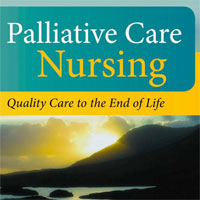Tag: mortality
Septic Shock and the Use of Norepinephrine IMCU
Elderly patients with septic shock treated with norepinephrine (NE) displayed a better Intermediate Care Unit (IMCU) survival at the ward and at 30 days than previously expected. Our retrospective chart study did not... read more
Development and Assessment of Objective Surveillance Definitions for Nonventilator Hospital-Acquired Pneumonia
These findings suggest that objective surveillance for NV-HAP using electronically computable definitions that incorporate common clinical criteria is feasible and generates incidence, mortality, and adjusted ORs for hospital... read more
ICU Admission Source as a Predictor of Mortality for Patients With Sepsis
Sepsis is the leading noncardiac cause of intensive care unit (ICU) death. Pre-ICU admission site may be associated with mortality of ICU patients with sepsis. This study quantifies mortality differences among patients... read more
Acute Liver Failure: Evidence-Based Evaluation and Management
Although acute liver failure (ALF) is a rare clinical presentation in the ED, it carries a high mortality, morbidity, and resource cost. Across the developing world, the underlying etiology is primarily viral, with hepatitis... read more
Impact of a Multifaceted Prevention Program on VAP Including Selective Oropharyngeal Decontamination
Ventilator-associated pneumonia (VAP) remains a serious complication of mechanical ventilation (MV), and has an incidence between 2 and 16 episodes per 1000 ventilator-days, an attributable mortality of 5–13%, excess ICU... read more
Norepinephrine Shortage and Mortality Among Patients With Septic Shock
Drug shortages in the United States are common, but their effect on patient care and outcomes has rarely been reported. This cohort study evaluated whether a national shortage of norepinephrine in the United States in 2011... read more
Transfusions Stuck in an Endless Cycle of Denial
Each publication from Maitland, et al., gives us a glimpse of a greater medical truth, but our view is obstructed by questions about external validity. This group published the landmark FEAST trial that questioned the... read more
MODS on Day 1 is a Major Source of Mortality in the PICU
Multiple Organ Dysfunction Syndrome (MODS) present on Day 1 of admission continues to be a major source of morbidity and mortality in the PICU, but risk of poor neurologic outcome may be improved. Further research is... read more
Prehabilitation and Nutritional Support to Improve Perioperative Outcomes
Studies evaluating exercise and nutrition interventions before elective major surgery in adults are producing encouraging early results, but definitive clinical evidence is currently very limited. Future research should... read more
Palliative Care Nursing: Quality Care to the End of Life
This fourth edition of a comprehensive text/reference that has been valued by students, educators, and practicing nurses for many years, Palliative Care Nursing continues to reflect the fundamental hospice and palliative... read more

Vitamin C for Sepsis Suffers a Setback. Or a Step-Forward. It’s Complicated
The CITRIS-ALI study found no difference in primary outcomes among patients with sepsis treated with vitamin C versus placebo. But there was a difference in a secondary outcome - overall mortality. When it comes to sepsis... read more
Brainstem Responses Can Predict Death and Delirium in ICU Sedated Patients
Assessment of brainstem responses is feasible in sedated critically ill patients and loss of selected responses is predictive of mortality and altered mental status. 72 patients were included in the initial group and 72... read more
Effect Sizes in Ongoing Randomized Controlled Critical Care Trials
For some of the largest ongoing critical care trials, many clinicians regard prior probabilities as low and consider that plausible effects on absolute mortality are less than 5%. Further work is needed to determine whether... read more
Long-Term Outcomes and Health Care Utilization after Prolonged Mechanical Ventilation
Critically ill patients who undergo mechanical ventilation in an ICU for longer than 21 days have high in-hospital mortality and greater postdischarge mortality, health care utilization, and health care costs compared with... read more
Impact of Delayed Admission to ICUs on Mortality of Critically Ill Patients
When the number of patients who require intensive care is greater than the number of beds available, intensive care unit (ICU) entry flow is obstructed. This phenomenon has been associated with higher mortality rates... read more
Accuracy of Quick Sequential Organ Failure Assessment Score to Predict Sepsis Mortality
Overall, quick Sequential Organ Failure Assessment score outperforms systemic inflammatory response syndrome in predicting sepsis outcome, but quick Sequential Organ Failure Assessment score has relative strengths/weaknesses... read more
Noninvasive Ventilation in Pneumonia-induced Early Stage Mild ARDS
Treatment with noninvasive ventilation (NIV) did not reduce the need for intubation among patients with pneumonia-induced early mild acute respiratory distress syndrome (ARDS), despite the improved PaO2/FIO2 observed with... read more
Comparison of Echocardiographic Indices of RVEF in Critically Ill Patients
Though echocardiographic evaluation assesses the right ventricular systolic function, which of the existing parameters best reflects the right ventricular ejection fraction (RVEF) in the critically ill patients is still uncertain.... read more
Impact of Critical Illness on Resource Utilization
An ICU admission is associated with increased resource utilization including hospital readmissions, with many due to an ambulatory care sensitive condition. Lower socioeconomic status and higher severity of illness are associated... read more
Refractory Septic Shock: Our Pragmatic Approach
Despite timely intervention, there exists a small subgroup of patients with septic shock who develop progressive multi-organ failure. Seemingly refractory to conventional therapy, they exhibit a very high mortality. Such... read more
Association Between Mean Arterial Pressure and AKI and a Composite of Myocardial Injury and Mortality in Postoperative Critically Ill Patients
Hypotension thresholds that provoke renal injury, myocardial injury, and mortality in critical care patients remain unknown. We primarily sought to determine the relationship between hypotension and a composite of myocardial... read more
Physical Function Impairment in Survivors of Critical Illness in an ICU Recovery Clinic
Physical function measurement in a recovery clinic is feasible and may inform subsequent morbidity and mortality. 36 patients were seen in clinic from July 2014 to June 2015; the median SPPB score was 5 (IQR 5). The... read more









